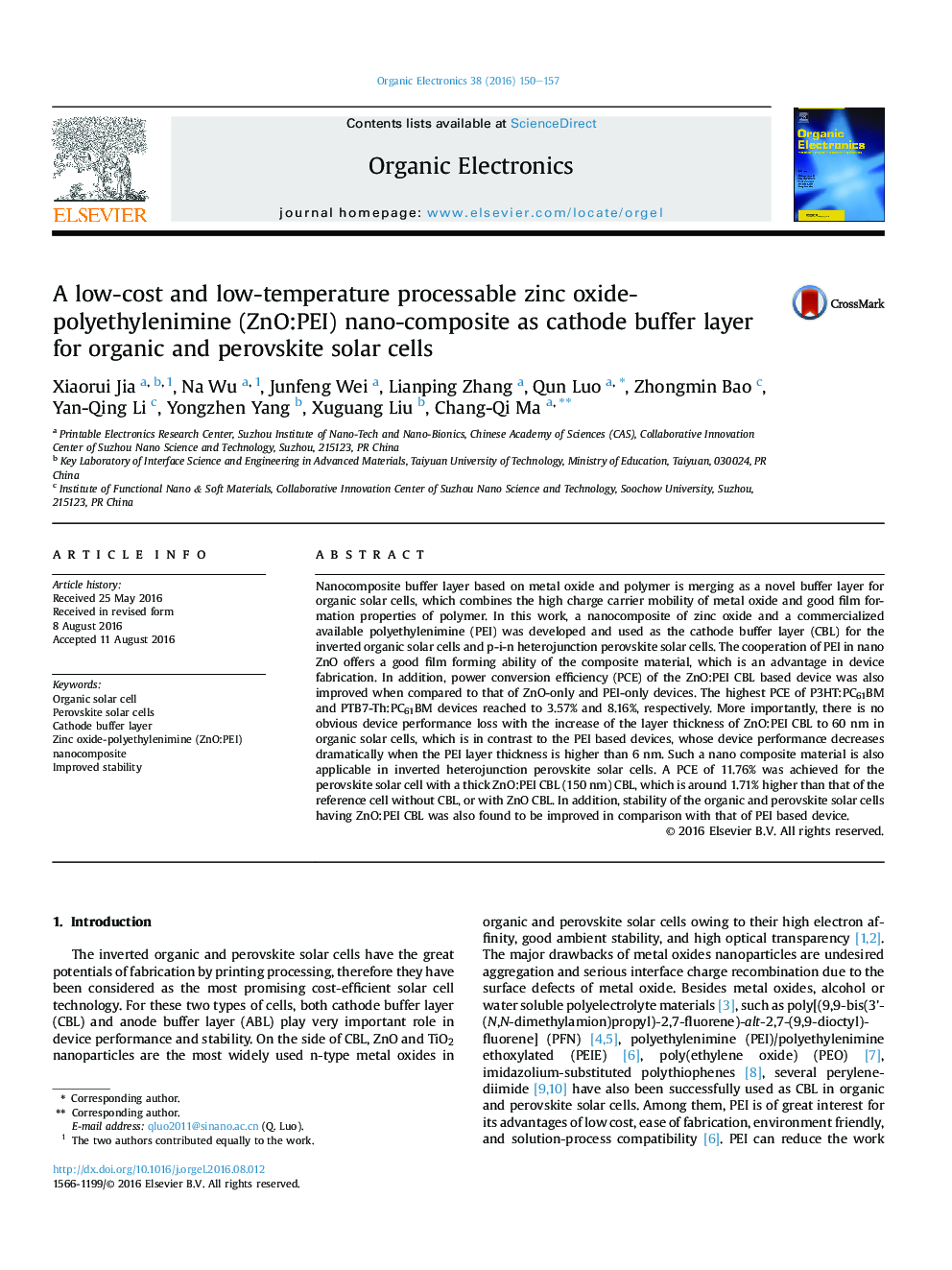| Article ID | Journal | Published Year | Pages | File Type |
|---|---|---|---|---|
| 1264154 | Organic Electronics | 2016 | 8 Pages |
•A low-cost and low-temperature processable Zinc oxide-polyethylenimine (ZnO:PEI) nanocompoiste was developed.•Higher device performance was achieved for ZnO:PEI based organic and perovskite solar cells.•The device performance using ZnO:PEI was less thickness dependent.•The long term stability of perovskite solar cell was improved using the ZnO:PEI composite cathode buffer layer.
Nanocomposite buffer layer based on metal oxide and polymer is merging as a novel buffer layer for organic solar cells, which combines the high charge carrier mobility of metal oxide and good film formation properties of polymer. In this work, a nanocomposite of zinc oxide and a commercialized available polyethylenimine (PEI) was developed and used as the cathode buffer layer (CBL) for the inverted organic solar cells and p-i-n heterojunction perovskite solar cells. The cooperation of PEI in nano ZnO offers a good film forming ability of the composite material, which is an advantage in device fabrication. In addition, power conversion efficiency (PCE) of the ZnO:PEI CBL based device was also improved when compared to that of ZnO-only and PEI-only devices. The highest PCE of P3HT:PC61BM and PTB7-Th:PC61BM devices reached to 3.57% and 8.16%, respectively. More importantly, there is no obvious device performance loss with the increase of the layer thickness of ZnO:PEI CBL to 60 nm in organic solar cells, which is in contrast to the PEI based devices, whose device performance decreases dramatically when the PEI layer thickness is higher than 6 nm. Such a nano composite material is also applicable in inverted heterojunction perovskite solar cells. A PCE of 11.76% was achieved for the perovskite solar cell with a thick ZnO:PEI CBL (150 nm) CBL, which is around 1.71% higher than that of the reference cell without CBL, or with ZnO CBL. In addition, stability of the organic and perovskite solar cells having ZnO:PEI CBL was also found to be improved in comparison with that of PEI based device.
Graphical abstractFigure optionsDownload full-size imageDownload as PowerPoint slide
